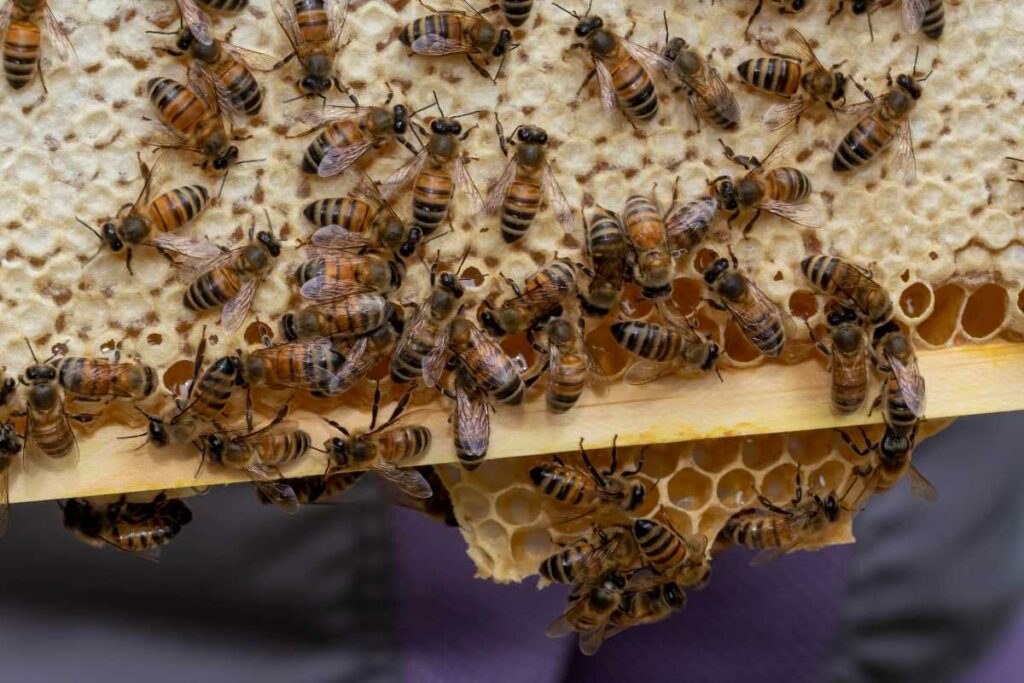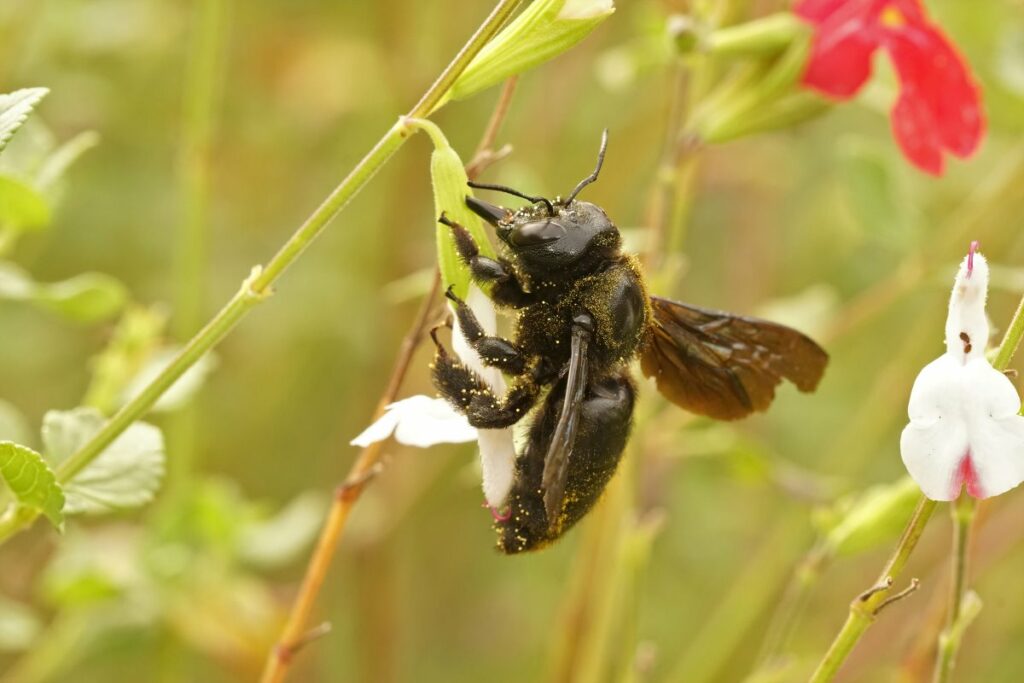As days get longer, the seasonal affective disorder dissipates, and the flowers and weeds bloom. Our neighborhoods and yards get prettier as blossoms emerge. But with those colorful petals and blooms come the bees.
While bees are necessary for the planet’s health and are considered the good guys, homeowners still don’t want them making their way inside the house. Some family members might have allergic reactions to bee stings or simply don’t enjoy the feeling of a bee stinging them. If you’re finding bees flying by or tunneling into your house, read about why they might be attracted to your home and some bee removal options you can try.
The Different Types of Bees
Three types of bees are commonly found in the U.S., including honeybees, bumblebees, and carpenter bees. Here’s how to differentiate between these three types.
Honeybees: The Makers of Liquid Gold
These cute little guys have four wings, stripes across their backs and abdomens, and long, slender antennas that they use to find flowers to pollinate. Honeybees grab nectar and pollen from various plants and take it back to their hive, where they make honey to eat.
Honey is precious to them, and to guard their treasure, they build their hives in a place that offers shelter and protection. Hives can exist in hollowed-out trees, utility boxes, structures, or even in the crevices of rocks.
Honeybees sometimes have a bad reputation because they leave a sharp stinger in their victim if they sting. However, we shouldn’t hold too much of a grudge—the honeybee is essential to the agricultural industry. Without these feisty and hardworking little insects, our food production would be vastly and devastatingly affected.

Bumblebees: The Gentle Giant
These adorable creatures differ from their honeybee cousins in that they are a bit chubbier and significantly fuzzier. They’re a little bigger than their striped relatives, which might make them look more intimidating, but they’re pretty reluctant to sting a person. They are often less aggressive and keep to themselves unless they feel threatened.
Bumblebees build nests in various locations, including grass, gardens, underground areas, inside trees, and some human-made structures.
Carpenter Bees: The Wood-Boring Bee
Carpenter bees, the largest of the three species, are known for their smooth and shiny or leathery bodies, which can be predominantly black or black on the abdomen and have yellow hairs on the thorax. Males may have a colored patch on their faces, which adds to their unique appearance. These bees are usually found in nests built in wooden structures or wooded areas. With their impressive size, they can grow up to an inch in length, making them stand out among other bee species.
Why Are Bees Flying Around My House?
There could be a variety of reasons why bees are attracted to your house. One particular reason might be the plants on or near your property. Bees love congregating near areas with plants that can provide them with the necessary sustenance, such as nectar and pollen. Some common plants that attract bees are flowers, wildflowers, fruit trees and shrubs, herbs, daisies, and clover.
Bees also need a water source to cool down their hives. If your property has a water source, whether a pond, a creek, a pool, or even just some standing water, bees could be attracted to how easy it is to get the hydration they need.
Bees might choose to settle in if your property has areas that provide protection and shelter, such as a hollowed-out tree or a part of the house or garage that’s not disturbed frequently. They may think such places can offer them a safe spot for their hive.

When To Seek Bee Removal Services
Homeowners can take some measures to decrease the number of bees buzzing around their property. Although most plants attract bees, some non-flowering plants, like ferns and evergreens, won’t attract these insects because they can’t get nectar or pollen. Homeowners can also do their best to get rid of stagnant water or cover up pools to keep bees from accessing the water sources.
Also consider strategically locating plants and flowers that would attract helpful bees to areas that won’t bother you or your loved ones.
It’s also a good idea to walk around your property and make sure that bees aren’t able to access crevices on the sides or undersides or roofs and porches—those can be ideal places to set up their hives and nests.
Even though bees get a bad rep since they can sting, as we said earlier, they’re still the good guys. If you come across a beehive, it’s best to contact professional beekeepers to move it safely or dispose of it if needed.
Look To Rove Pest Control for Bee Removal Today
We offer various services to keep carpenter bees from making a home in yours. We also offer services for bees unfriendly relatives – wasps. Rove Pest Control has locations throughout Arizona, Massachusetts, Michigan, Minnesota, and Wisconsin. Whether you’re experiencing a sudden uptick in bees or wasps, or you’d like to schedule routine pest control services to deter them from moving in, contact us for a free consultation and pest control management that best suits your needs.
About Rob Greer: Pest Control Expert and Industry Leader
Rob Greer, co-founder of Rove Pest Control, has a deep connection with nature, developed during his upbringing in rural Idaho where he raised horses and cattle. He began his career in pest control in 2001 to support his university studies. After earning a BS in Business Management, Rob, along with Lenny Gray and McKay Bodily, founded Rove Pest Control.
Rob has played a pivotal role in shaping the operational framework of Rove Pest Control, with a focus on personal development for team members, public health awareness, and tailoring services to meet the needs of individuals and communities.
As an Associate Certified Entomologist (ACE) and Subject Matter Expert (SME), Rob has made significant contributions to the pest control industry. He has collaborated on the Minnesota Department of Agriculture’s UMN Extension certification manual and exam development, the National Pesticide Applicator Certification Core Manual for the EPA, and the Quality Pro Customer Service Credential Task Force. His expertise has also been recognized in his testimony for the pest control industry before the Minnesota state legislature as a State Policy Affairs Representative. Currently, Rob serves as the President of the Minnesota Pest Management Association Board. Learn more about Rob Greer.